

24ANNUAL REPORT



AcknowledgementofCountry
The land and waters within the Northern Gulf region include the country of Western Gugu Yalanji, Kokoberra, Kokomenjen, Kunjen, Kuku Muluridji, Djungan, Wakaman, Bar Barrum, Ewamian, Tagalaka, Kukatj, Gkuthaarn and Kurtijar people.
Gulf Savannah NRM (GSNRM) acknowledges and respects these Traditional Custodians of land and sea. We recognise the diversity of Traditional culture, and the deep and varied connections Traditional Custodians have with the land and sea within the region. We recognise caring for Country contributes to connection, participation and overall health of people and Country We recognise the expertise, knowledge, historical and cultural connection of Traditional Custodians and are committed to partnering with them and following their lead
We pay our respects to Elders, past and present, and emerging leaders. We acknowledge and recognise the primacy of Traditional Custodians’ obligations, rights and responsibilities to use and care for their Traditional lands and waters. PublishedbyGulfSavannahNRM2025
Frontcoverimage: GSNRM’s biodiversity officers team up with Western Yalanji Aboriginal Corporation and Queensland Parks and Wildlife Service to deploy pig traps in Brooklyn Sanctuary
WhatisNaturalResource Management?
“Natural Resource Management is the protection and improvement of the natural assets that underpin our quality of life – our soil and water, the climate, landscapes and biodiversity NRM Regions Queensland is the peak body for natural resource management in the state, supporting and promoting its members – the 12 regional natural resource management organisations of Queensland [including Gulf Savannah NRM]”
- Natural Resource Management Regions
Queensland
From left to right: Dr Edward Evans, Archie Levers, Océane Dupont and Scott Morrison.

Chair’s Message

Dearfriends,partnersandsupporters,
On behalf of the Board, I am pleased to present the 2024-25 annual report, highlighting our achievements over the past year
We have continued to evolve, grow, and strengthen our foundations so that we can get on with the important business of delivering on-ground natural resource management as a trusted delivery partner. We can only do this with the collaboration and support of our sponsors, industry, local government, the research community, Indigenous organisations, and Landcare groups.
In 2025, we cemented our commitment to maintain our regional presence by renewing our lease on our Savannah House office and purchasing a house in Georgetown for staff accommodation. This will ensure we have housing available for new staff relocating to the regions to deliver projects well into the future, while it will also contribute to the growth and vitality of our regional communities.
On a statewide level, Queensland’s NRM sector, including Gulf Savannah NRM, demonstrated expertise, on-ground capability, and determination. This resulted in the Queensland Government committing to its largest-ever single (and transformative) investment in NRM: the $117 million NRM Expansion Program. This milestone funding will deliver projects aligned with our region’s priorities to improve land condition, enhance biodiversity, and support healthy coasts and waterways.
Looking ahead over the next 12 - 24 months, our challenge will be to maintain strong NRM program delivery, while also adapting to a changing climate, shifting funding landscapes, and evolving community capacity to support living landscapes and local livelihoods.
I would like to extend my appreciation to my fellow Board Directors for their valued contributions and support throughout the year We remain focused on broadening and deepening partnerships, as well as strengthening our governance and strategy.
Thank you to our CEO Zoe Williams, and our remarkable staff for their significant contributions.
Community support is essential to our success as your local NRM group We extend our thanks and respect to you all for hosting field days, participating at our workshops and meetings, or helping us plan and deliver projects We are deeply grateful
Sincerely,
EllenWeber ChairofGulfSavannahNRM
CEO’s Message

As I reflect on 2025, the recurring theme for Gulf Savannah NRM seems to be transition - a notion that struck a chord with our NRM colleagues from all over the country at this year’s National NRM Knowledge Conference in Cairns, as we tackled the topic of Changing Landscapes: New Horizons We were proud to partner with NRM Regions Australia and NRM Regions Queensland, and worked closely with our neighbours at Terrain NRM and Cape York NRM to bring this national event to the Gulf and Far North Queensland.
This year, we said farewell to some long-term members of the team and welcomed new people to carry forward our goals and vision. I thank the departing staff for their commitment to the organisation and dedication to the communities of the Gulf While they may no longer work for us, they will always be within Gulf Savannah NRM’s orbit, and their legacy continues in the work we do
2024 - 25 also offered progress for some long-held aspirations as we secured project funding commitments from the Queensland Government to address invasive Neem trees on the Gilbert River, and consolidated an exciting partnership with seven of our regional NRM colleagues to deliver Regional Feral Pig Coordinators across north and western Queensland Our landholders and local governments have consistently told us that weeds and feral animals are the number one NRM priority for them, and these projects will provide support to tackle these pressing issues As these projects start hitting the ground, it is very pleasing to see the advocacy work of the last few years coming together via tangible deliverables funded by the NRM Expansion Program
On a personal note, I was honored to be selected to take part in the Social Impact Leadership Australia program (SILA), a 12-month leadership initiative for CEOs of not-for-profits, delivered by the Centre for Social Impact. Through the program, I was able to join 24 exceptional CEOs of social enterprises and NGOs to explore how we can best lead our organisations and communities through social change. I would like to thank the Centre, the donors who share the vision and support the program, the facilitators, coaches and staff, and my fellow participants for generously sharing their knowledge.
I would also like to thank the Board for supporting my participation in this once in a lifetime opportunity, and all the staff who took on additional responsibilities while I completed the program – I was only able to take up this opportunity because I knew that Gulf Savannah NRM would be in capable hands during my absence.
My experiences in the SILA program have reinforced my belief that big issues – for the environment, economy and society – can only be addressed by considering the system as a whole This is the premise on which regional NRM is built: an understanding that the interconnected relationships between all elements, human and environmental alike, are as important as the individual pieces
As we look to next year and beyond, our challenge is to identify which parts of the system we can exert influence over to achieve the best outcomes for our communities and the environment. We must continue to punch above our weight by leveraging our relationships with government, community and industry to deliver for our region In that way, we will address the pressures of our changing landscapes and take advantage of the new horizons that appear before us
ZoeWilliams CEOofGulfSavannahNRM

Board&Governance
Thisreportmarkstheendofmysecondtermandbringstoacloseamost enjoyableeightyearsofservicetotheNorthernGulfcommunities. My chairs during that time have included John Brisbin, Rikki Gunn, and for the last five years Ellen Weber - all totally different but bringing excellent leadership skills and insightful knowledge of the area I've watched Zoe Williams develop into a highly competent CEO, taking us from financial uncertainty into a robust, highly regarded organisation. I salute you all.
For myself, I've strived to bring the understanding I gained from decades of working in the Gulf region - first barra fishing in the gulf in the 70s then for 20 years in DPI Fisheries - to the board's decisions. My work on the board has included helping write our 2023 - 2033 NRM Plan, being present as we guided staff and communities through to overcome COVID and natural disasters I've experienced working with consecutive board members on Strategic Plans, stakeholder engagement, policies (25 all up!), risk management assessments, property purchases, HR processes, and contractual decisions I'm proud to say I drove the name change to Gulf Savannah NRM to reflect our unique bioregion and chaired our Gift Fund committee (donations fund) to produce a marketing plan and a suite of gulf related but otherwise unfunded projects. It’s been a great eight years and I wish the Gulf Savannah board, its Members and the Gulf community all the best for what looks like a great future
IthasbeenasuccessfulandproductiveyearforGulfSavannahsNRM.Some oftheuncertaintyregardingprojectfundingthatwaspresentin2024has gone,enablingtheteamtofocusontheirimportantwork. A carefully considered due diligence process led to the purchase of a property in Georgetown which will alleviate difficulties for staff in securing accommodation, thereby promoting stability in staffing and assisting with recruitment During the year, the Board maintained a close focus on strategic planning for the organization and steps were taken to increase staff engagement with the strategic plan. It was pleasing to see GSNRM well represented at the 9th National NRM Knowledge Conference held in Cairns and the presentations by staff at that conference reflected positively on the organisation and its work
During the year, I took on the role of Chair of the Board Risk Subcommittee, the establishment of which is an important development in the governance of GSNRM This was my third and, unexpectedly, final year as a member of the Board I wish the staff and my fellow Board members the very best for the future of the organization.
ThishasbeenanotherbusyandeffectiveyearfortheGulfSavannahNRMand theBoard.Zoeandherdedicatedteamaretobecongratulatedfortheireffortsin securingfurtherfundingandtheircommitmenttoprojectdelivery.In my role as a Director, I have been a member of the Finance and Risk Committees, and attended the National NRM Conference in Cairns. This conference allowed for the “hard won” successes to be shared and for the NRM achievements within our region to be showcased The collaborative approach adopted by Directors and Associate Directors allowed the Board to deliver good governance and provide strategic direction to the organisation.
“Thefirstcasualtyofbattleistheplan.”GulfSavannahNRMinvestsconsiderable timeandeffortinplanning—everydetailischecked,everyriskassessed. Yet, as always, the environment has its own plans External forces shifting conditions, political dynamics, and fluctuating funding can quickly challenge even the most robust strategies Amid this uncertainty, the key question remains: how are local needs being met? In a constantly changing environment, the Board’s role is to provide stability and direction A solid foundation enables the organisation to adapt without losing focus on community outcomes. Ultimately, good governance remains our greatest strength It ensures accountability, resilience, and the ability to pivot when plans inevitably meet reality
OurVision
Vital landscapes
Vibrant communities Thriving futures
Our Purpose
Integrated delivery that lands


Weareavoiceofinfluence creatingbeneficial outcomes
Weareapartnerof firstchoice 1
2 3
Wearethriving,resilient andagile

Communities and landscapes of the Northern Gulf region are more resilient Gulf Savannah NRM clearly articulates key issues for the region, monitors our impact and influences decision makers
Gulf Savannah NRM is recognised as a leader in natural resource management and our partnerships maximise our impact
Gulf Savannah NRM is a wellresourced and resilient organisation Our team has the capability and capacity to deliver on our vision and adapt to changing external factors
TheNorthernGulf
AboutUs
Gulf Savannah NRM (GSNRM) is a non-profit natural resource management company and a registered charity, working with people to create opportunities for current and future generations. Our projects help strengthen communities and industries, cultivating living landscapes to support local livelihoods We balance social, economic, and cultural interests, while we also maintain environmental values and healthy ecosystems
Our team works from offices in Georgetown, Croydon and Mareeba, connecting science, technology and Landcare to improve productivity for farmers and graziers
Fromcoastlinetotablelands
The Gulf Savannah is an extensive region, covering an area of approximately 196,100 km2 from the Gulf of Carpentaria to the Great Dividing Range. We focus on working with landscapes used for grazing, horticulture, fishing and conservation to achieve environmental, social and economic benefits

Tropical savannah rangelands 200km of coastline in the Gulf of Carpentaria
We support the Department of Environment, Science and Innovation to monitor water quality at Emerald Creek, part of the Barron River catchment
Through our partnership with TNQ Drought Hub and Farmers2Founders we delivered the TEKFARM project, supporting the adoption of ag-tech to improve production efficiency and drought resilience in agricultural industries
Gulf Savannah NRM’s Sustainability Strategy is our way of ensuring we “walk the talk” It’s an ambitious plan to improve the sustainability of the organisation over time as we continue to meet the challenges of operating a business in a constrained fiscal environment. Our Strategy is based on the 17 United Nations Sustainable Development Goals, representing a truly international approach, and reflecting our intention to “think global and act local” This page features some of our 2024–25




Queensland Governments Protecting Important Biodiversity Areas Program, represents a collaborative effort between the landholders, Traditional Owners, and the Queensland Government to safeguard critical habitat for threatened species such as the red goshawk and black-throated finch.
To guide the refuge’s management and conservation priorities, Gulf Savannah NRM, with support from Biodiversity Officer Dr Edward Evans, coordinated a series of environmental assessments, including vegetation, fauna, and aquatic surveys, using a helicopter and boat to access sites across the river. The results confirmed the refuge’s high ecological value and identified key habitats that require protection and ongoing monitoring.
In addition to survey work, GSNRM delivered an on-site erosion control workshop for station managers and staff, focused on improving the resilience of unsealed access roads across the refuge to reduce erosion and sediment loss during wet seasons This practical training strengthened local land managers’ capacity and supported the long-term sustainability of roadways within the refuge
Building on the success of this partnership, GSNRM has since been engaged by the Cunningham Cattle Company to deliver similar assessments and capacity-building activities at the newly expanded Esmeralda Nature Refuge south of Croydon.
Work on both Nature Refuges is funded and supported through the Queensland Government’s NatureAssist program and delivered in partnership by the Cunningham Cattle Company and Gulf Savannah NRM

later impacted by intense rainfall before vegetation could establish, leading to renewed erosion and damage to rock check dams and drainage basins.
This project focused not only on physical site repairs, but also on building local capacity. GSNRM partnered with the Ewamian and Tagalaka ranger groups, engaging five Indigenous rangers to participate in hands-on training in drone use and earthmoving machinery operation. Under the guidance of an experienced site supervisor and earthmoving contractor, the rangers gained practical skills operating backhoes, a small excavator, and a skid-steer bobcat to complete targeted maintenance and rehabilitation works across the damaged gully systems
Beyond restoring landscape stability, the project delivered long-term benefits by strengthening local Indigenous ranger capability in land management and technical operations skills that will continue to support future natural resource management and environmental recovery efforts across their traditional Country

Feralpigcoordinationandbiosecurity preparedness
Funded under Queensland Feral Pest Initiative Round 8a, the Feral Pig Coordination and Biosecurity
Preparedness collaborative project spans seven NRM regions, encompassing 66 per cent of Queensland’s landmass This far-reaching initiative recognises feral pig control as a shared responsibility among government, communities, industry, and landholders. The project targets short-term agricultural, biodiversity, and cultural asset protection, along with longer-term disease risk reduction
Coordinator roles are hosted by Desert Channels, Cape York NRM, Terrain, NQ Dry Tropics, Southern Gulf NRM and Gulf Savannah NRM, with an aim to build regional capacity for feral pig control activities. Coordinators actively engage stakeholders, and oversee capacity building, planning, and delivery, aligning with local Biosecurity and NRM plans and the National Feral Pig Action Plan 2021-2031.
This role works collaboratively with Regional Feral Pig coordinators, Indigenous Land and Sea Rangers, NRM groups, Local Government and Qld Government Biosecurity Officers, Veterinarians, the Healthcare industry, landholders, researchers, training providers and other stakeholders to share information and knowledge A specific task is the field deployment and training in the use of latest technology feral pig trapping and monitoring techniques.
Furthermore, aerial feral pig control measures cover three million hectares of the Gulf Savannah NRM region each year, followed by 87,000 hectares of programmed ground shooting, plus various coordinated baiting and opportunistic shooting and dogging efforts
In 2025-26, Gulf Savannah NRM will provide landholder assistance for active feral pig management, including the loan of pig traps and bulk feeders
Biosecurity Officer Scott Morrison teams up with Queensland Parks and Wildlife rangers to assemble remotely operated pig traps

NorthQueenslandhasahugecontributiontoproductivity,from beefandcattle,tograinsandhorticulture.Thisregionisreally importantforagriculturalproduction Wealso,however,have thehighestferalpigdensityinAustralia.Pigswilleatanything andareverydestructive.Alotofgrowershavemassivelosses eachyear.Fromabiodiversityperspective,pigsalsocreatealot ofdamagetosoilsandwaterways,andarerecognisedasa threateningprocesstomorethan100nativespecies.
Workingtogetherwithyourneighbours,withlocalcouncilsand stategovernments,isveryimportant Pigswillgowhereverthe resourcesare,sothat’softenovermultipletenures.Ifweare goingtohavesuccessfulcontrol,weneedtoimplementa numberofmethodsthroughouttheyear,andworkwith neighbouringlandholdersandorganisationstoachieveabig impactoverabigarea.
ResilientfuturesforQueensland’sGulf Savannah
The Resilient Futures for Queensland’s Gulf Savannah project received Commonwealth funding through the local stream of the Preparing Australian Communities program It commenced in June 2022 and concluded on 30 March 2025
The project strengthened the Gulf community’s preparedness and resilience to natural disasters such as fires, floods, and cyclones It engaged landholders and local authorities to raise awareness of natural hazards and promote effective mitigation strategies Key achievements included developing forty-five tailored disaster management plans, installing thirty remote bucket rain gauges, and creating a shared data dashboard for real-time monitoring and timely flood warnings
Workshops in fire management, rural first aid, and mapping equipped residents with practical skills to prevent, prepare for, and respond to emergencies. Through these initiatives, the project built a proactive, informed, and resilient community better prepared for future natural disasters

– Scott Morrison, GSNRM Biosecurity Officer
Traps with PIGBAITTA hoppers, filled with fermented feed to attract these destructive animals
PLANT SPECIES
mappedacross2.96millionha
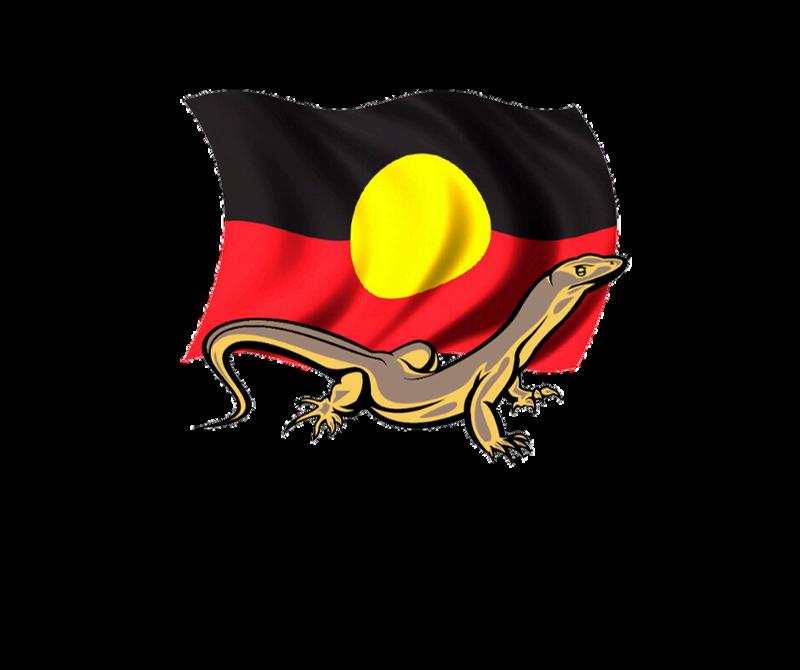
PlantSpeciesbyCatchment
Monitoringweeddistributionfor coordinatedcontrolintheremoteGulf
Savannah
During 2024, Gulf Savannah NRM conducted six workshops across the region to showcase the project to local landholders. Each participant was given five, A3 size property maps, overlain with 100 hectare hexagons, and asked to identify their priority weed concerns Participants used a density mapping guide and scored the presence of up to five top priority plants of concern across their property, with each map dedicated to one species only 100-hectare was the smallest reportable infestation size
36 plant species were mapped by 68 landholders, covering 2 96 million-hectares Shrubs were the most common (16 spp ), followed by trees (9 spp ), grasses (4 spp.), herbs (3 spp.), sedges (2 spp.) and one vine species Ten Category 3 Restricted Invasive Plants under the Biosecurity Act 2014 were reported
Infestations of category three restricted invasive species that are an extension to their mapped range and additional to the Queensland Spatial Catalogue are (1) Chinee apple (Ziziphus mauritiana) at 31,983hectares in Etheridge Shire and (2) Prickly Acacia (Vachellia nilotica) at 2,999-hectares in Carpentaria Shire GSNRM will prioritise control work in this area in the future as funds become available
RubberVine (Cryptostegiagrandiflora) 358,069ha
Gradergrass (Themedaquadrivalvis) 202,047ha
Chineeapple (Ziziphusmauritiana) 181,946ha
Horehound (Mesosphaerumsuavelons) 94,158ha
Breadfruit (Gardeniavilhelmii) 64,685ha
Data points and density scores recorded in this project were shared with local, state and regional organisations, such as Far North Queensland Regional Organisation of Councils (FNQROC) to support planning and future management actions.
This project was funded by the Queensland and Australian Governments as part of the Queensland Feral Pest Initiative.
Impacts
Native Heart Leaf Poison Bush (Gastrolobium grandiflorum) was noted due to its toxic effectonstock
Breadfruit (Gardenia vilhelmii), Conkerberry (Carissa lanceolata & C ovata), Rubber vine (Cryptostegia grandiflora) Soap bush and Turpentine (Acacia holosericea & A chisholmii) were raised due to their contribution to woodythickeningand subsequentimpactsonpastoral production.

Accidental introduction of weed species was raised through contaminatedhay bales,turfandtransiting machinery (externally owned)
TagalakaLandandSeaRangers
Indigenous leadership and collaboration are increasingly part of Gulf Savannah NRM’s DNA, where real outcomes grow from starting small, staying flexible, and placing Traditional Owners at the centre of work on Country.
This approach was on full display throughout 202425, culminating in a recent NRM Regions Queensland Lunch & Lead session, where Gulf Savannah NRM shared the story of how a simple conversation with Tagalaka Traditional Owners about pig predation and declining turtle sightings at Tagalaka National Park (formerly Littleton NP) grew into a meaningful, longterm partnership. What began as a discussion about protecting turtles from feral pigs evolved into a project that helped the Tagalaka Aboriginal Corporation achieve a long-held aspiration: establishing a full-time Tagalaka Ranger Program.
Indigenous Cultural Broker Natarsha Bell closed the session with a powerful reflection on the deeper meaning behind the project, introducing the Yalanji concept of Gugu Yaral “straight talk with heart and passion”
“When fire moves across Country, it carries truth with it,” Ms Bell said “Our survival has always depended on that truth our connection to land, water, and spirit. These are not just resources; they are our lifeblood,” she said
“The struggle we face today is showing that connection still exists, that it is alive in us. Every project, every act of care for Country, is proof that our hearts remain here, grounded and strong”
After a thriving 12-month stint, the initial collaboration between GSNRM and the newly formed Tagalaka Ranger team has now wrapped up
Tagalaka ranger team: Jamie Richardson, Mark Owens, Edmond Busch and Brendan Grogan-Creed





GrazingFutures
The Grazing Futures project supports producers in the Gulf region to strengthen business resilience
In 2024-25, Gulf Savannah NRM worked with landholders to develop farm business resilience plans Producers were connected with Rural Financial Counsellors and QRIDA representatives to explore loans, grants, and financial support options that align with their business goals.
Through one-on-one support and targeted workshops, the project has helped producers identify risks, plan for seasonal variability, and make informed investment decisions that build stronger, more sustainable grazing enterprises across the region. The learning topics covered include: (1) Business Management & Planning, (2) Natural Resource Management, (3) Personal & Social Resilience and (4) multiple other topics
See the figures above for the delivery figures summary 2024-25
We’remonitoringtheeffectofgrazingon biodiversityfactorsandindicators,aswellasthe influencepasturehasontheoverallhealthofthe environment.Thegoalistoseehowwecanuse livestocktoimproveourlandcondition,andalter thewaywemanageourherdssowecanadapt andevolveourlandscapeinamoreefficientand sustainableway.
– Julie Nicolosi, GSNRM Agriculture Officer


Agriculture Officer Julie Nicolosi engages with landholders
NorthernAustraliaClimateProgram: ClimateMates
Northern Australia Climate Program supports producers with forecasting tools and interpretation of climate drivers related to their specific region through the Climate Mates program This program helps bridge the gap between Bureau of Meteorology information and what producers need on the ground to make practical decisions.
In 2024-25, Gulf Savannah NRM’s Climate Mate worked with graziers to interpret forecasts and provide tailored climate updates to support management decisions Climate Mates helps Gulf producers use climate information, tools and support to plan ahead for what the season might bring. The total number of producers and industry people engaged in 2024-2025 was 2737 We also had 11 new signups

SoilGraduateProgram
The most common practice changes producers implemented in response to improved climate information were: adjusting stock numbers, early weaning, buying feed sooner, and shifting spending plans. Some also used forecasts to plan burns and improve pasture management Benefits included being able to adjust stock numbers more confidently at the end of each season based on expected conditions.
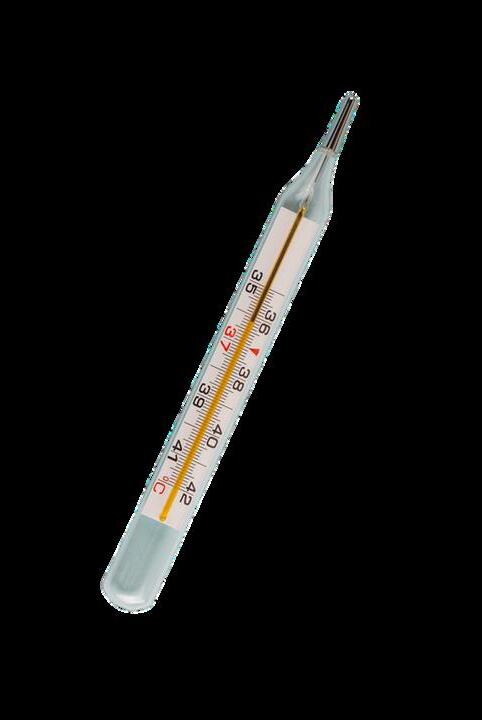
This year, Gulf Savannah NRM partnered with the Department of Environment, Science, Tourism and Innovation to host Soil Graduate, Mali Eagle. The program provided opportunities for field work, laboratory placement and desktop analysis, contributing to the development of core soil science skills. The 6-month placements at Department of Natural Resources, Mines and Manufacturing, Rural and Region Development (NRMMRRD) and Gulf Savannah NRM, provided many experiences, including opportunities to focus on key areas of the National Soil Action Plan
One focal area has been soil sampling to build skills in property characterisation and profile classification, in addition to site selection and fit-forpurpose sampling Soil sampling requires an understanding of the biological, chemical and physical properties of soils and develops a basic knowledge of geology, ecology and hydrology To further develop these skills, Mali attended workshops and training events, including Registered Soil Practitioner training and a Back to Basics workshop, conducted by Soil Science Australia

The program also provided many networking and mentoring opportunities to support Mali and the other graduates as early-career scientists The program has provided thorough training to develop and support the graduates as capable members of the soil workforce
Soil graduate Mali Eagle steps out of the field and into the lab
Soil mottle, pigmented by varying conditions


HelpingRegionalCommunities PrepareforDroughtProgram
Funded by the Australian Government’s Future Drought Fund, and administered by the Foundation for Rural and Regional Renewal (FRRR), the aim of the Digital Capacity and Last Mile Connectivity Project was to improve community access to, and utilisation of, digital infrastructure across the region Enhancing digital capacity provides opportunities for social networking and connecting to essential services or support in times of drought.
Between January 2024 and June 2025, nine digital capacity workshops were delivered across the region covering basic and advanced Word, Excel and Xero These workshops focused on improving computer literacy and practical digital skills within local communities, supporting individuals, small businesses, and community organisations
Expressions of interest were advertised to identify households and organisations in the region seeking improved connectivity We received 81 expressions of interest, of which we were able to support 11 households with small infrastructure upgrades to enhance connectivity.
A Next Steps Strategy for Continued Digital Capacity Building report was produced to inform future digital infrastructure planning under the broader TNQ Digital Connectivity Partnership
The aim of the Local Capacity for Regional Resilience project was to strengthen organisational capacity and governance of notfor-profit organisations, including First Nationsled groups, by delivering training, workshops, networking events and leadership opportunities which will enhance capability to better support community interests in times of drought
GSNRM facilitated three Changemaker workshops across the region, delivered by the Australian Regional Leadership Foundation in Mareeba and
KEYWORKSHOPS
DigitalCapacity
Advanced Word, Excel and Xero
Governance&OrganisationalResilience
Grant writing, marketing, social media and understanding financials
MentalHealthFirstAidTraining
Creating an action plan, learning to support friends and family through tough times
Georgetown. In addition, we hosted governance capacity and organisational resilience workshops in Croydon, Georgetown, Mt Surprise and Mareeba, covering key topics such as successful grant writing, marketing, social media, and understanding financials Four two-day Mental Health First Aid certified courses were held across the region and were among the most popular activities
A portion of the grant funding supported five not-for-profit community organisations ranging from the Croydon Men’s Club, who purchase pottery equipment to support more inclusive activities, to the Koah Sports and Social Club, which established a ‘best last place of refuge’ by installing off-grid power for their community hall
As part of this project, the third Northern Gulf Region Community Resilience Profile was completed, led by James Cook University Data was collected through regional surveys and a follow-up face-to-face workshop held in Georgetown
Community members come together for Mental Health First Aid training

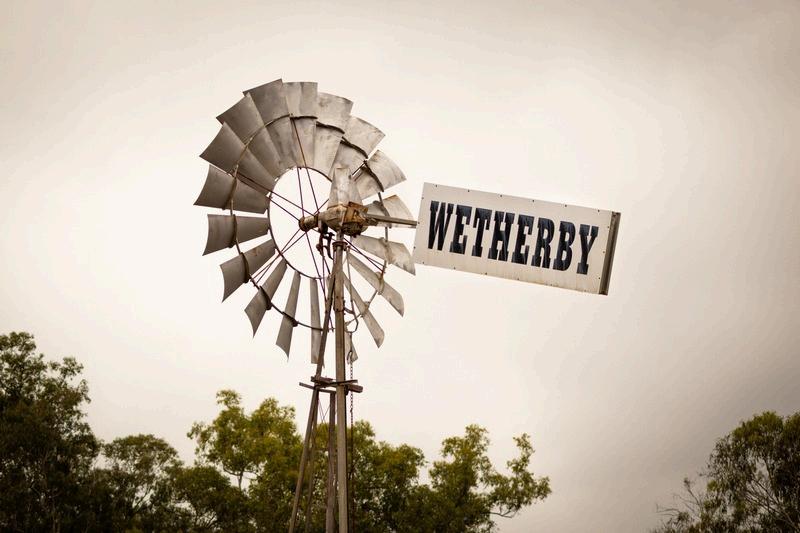
BreakingBarriersthroughBush Business
Breaking Barriers through Bush Business was funded by Queensland Health, Office for Women, and was delivered from August 2024 until May 2025 The program supported a core group of twelve remotely based women from across three local government areas - Mareeba, Croydon and Etheridge - to develop and grow their small business ideas into reliable income streams
The participating businesses spanned a diverse range of industries, including coffee and café vans, paddock to plate enterprises, skin care products, equine and agricultural services, arts and homewares, photography, physiotherapy, and bed & breakfast accommodations
Initial promotions attracted twenty-six applicants, with twelve women ultimately becoming the backbone of the program’s network While additional women connected periodically through a private Facebook group, varying personal and professional circumstances prevented some from completing the full program
The private Facebook group, created and managed by experienced mentor and Bush Business entrepreneur Kathy Rowling, served as the primary communication platform for the network. Weekly discussion topics encouraged business development, personal wellbeing and networking among participants
Through the program, five “mini meets” and a twoday Bush Business bootcamp were held in various Gulf locations, all facilitated by mentor Kathy Rowling. Eight women from the core group also completed a Cert IV in Entrepreneurship delivered by TAFE QLD
This marks the third iteration of the Bush Business Program, which continues to be a much sort after opportunity for women across the Gulf region.


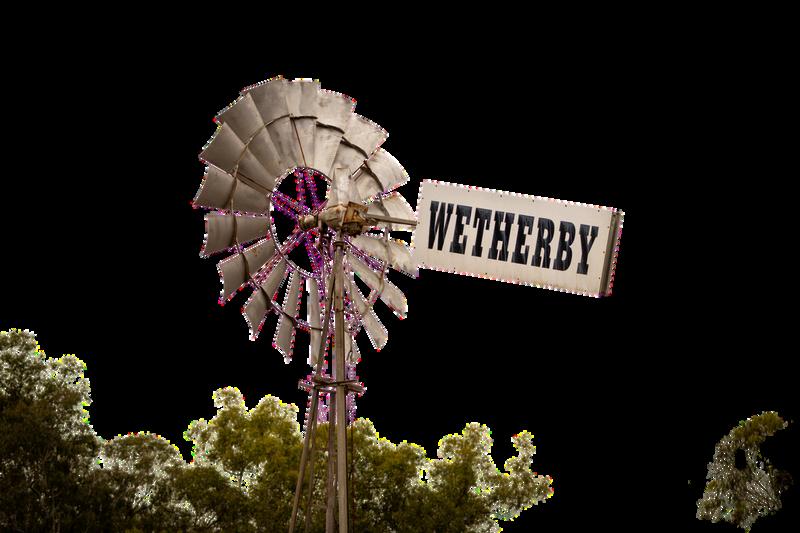




This year, the federally funded Regional Delivery Partners (RDP) Program made significant progress across the Gulf Savannah region through a series of projects focused on biodiversity protection, sustainable agriculture, and Traditional Custodian engagement
EasternForestsPriorityPlacesand theNorthernQuoll
Two major biodiversity initiatives, led by Gulf Savannah NRM’s Biodiversity Officer Dr Edward Evans, made strong progress throughout the year: (1) Protecting the Northern Quoll in the Northern Einasleigh Uplands Region and (2) Improving Threatened Species Habitat Condition in the Eastern Forests of Far North Queensland. Both projects focused on conserving key threatened species and their habitat, including the Northern Quoll and Northern Bettong, through ongoing ecological monitoring and targeted threat management activities
A major component of this work involved reducing pressures on critical habitat from invasive species Weed control efforts targeted high-risk invaders including gamba grass and lantana, while pest animal management focused on feral pigs and cats.
Innovative control technologies were trialed across project areas These included remotely operated pig traps and thermal-assisted cat detection and control, both designed to improve the effectiveness and efficiency of pest management in remote environments The next phase of this work will see the deployment of AIassisted cat traps, offering another leap forward in applying technology to wildlife protection.
Biodiversity Officer Dr Edward Evans explains project activities to members from the Federal Department of Climate Change, Energy, the Environment and Water (DCCEEW)
Climate-Smart Agriculture
2workshopsdeliveredin2024/25

Climate-SmartAgriculture
The Regional Delivery Partners program also supports the delivery of two Climate-Smart Agriculture projects, Climate Smart Agriculture in the Northern Gulf and Building Climate Smart & Productive Agricultural Landscapes in the Gulf Savannah, led by GSNRM’s Agricultural Officer, Jessica Miranda. Both projects aim to strengthen producer knowledge and showcase practical land management approaches that enhance productivity while improving environmental resilience across the region.
Throughout the year, some of the project’s demonstration sites were established across the Mareeba–Dimbulah Irrigation District and the northern Gulf grazing lands, with additional sites to be established in 2026 Each site showcases sustainable land management techniques, including integrated pest management (IPM), soil carbon retention, erosion control, and pasture improvement through legume establishment To complement the fieldwork, GSNRM hosted a series of workshops combining theoretical learning with hands-on demonstrations, enabling landholders to see first-hand how climate-smart practices can deliver both environmental and economic benefits
1of6trialsitesestablished
Theregenerativefarmingprojectaimsto empowerthefarmsintheMareeba-Dimbulah regiontoadoptmoresustainablepractices. Thisisimportantforourregionbecauseour producersherespendalotofmoneyon fertilizersandpesticide
– Jessica Miranda, GSNRM Agriculture Officer
IndigenousEngagement
Another key achievement under the RDP program was the formation of the Traditional Custodian Led Advisory Group, established with the support of Gulf Savannah NRM’s Indigenous Cultural Broker, Natarsha Bell.
The group was created to guide Gulf Savannah NRM in strengthening relationships with Traditional Custodians across the region. It provides expert advice on Indigenous interests, responsibilities, and connections to land, freshwater, and sea country, and plays a vital role in shaping culturally appropriate engagement approaches. Through this group, Traditional Custodian perspectives are being actively embedded in regional decision-making and project design, ensuring cultural values and knowledge are central to natural resource management in the Gulf Savannah
The establishment of this Advisory Group represents a major step forward in embedding Traditional Custodian leadership within natural resource management governance structures, ensuring that cultural values and traditional knowledge continue to shape environmental and agricultural outcomes across the Gulf Savannah
Traditional CustodianLed AdvisoryGroup
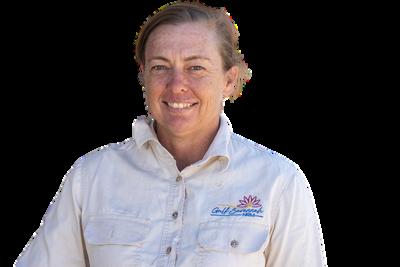
SustainableAgricultureFacilitator (SAF)
Further enhancing the organisation’s capacity, GSNRM welcomed a new Sustainable Agriculture Facilitator (SAF), Mandy Pickering, this year Mandy acts as a central point of contact for producers, landholders, and community groups seeking guidance on implementing sustainable agricultural practices Her role focuses on linking the region’s farming community with current advice, resources, and funding opportunities to support best-practice natural resource management, biodiversity conservation, and climate adaptation initiatives
Together, these RDP projects are delivering tangible environmental outcomes while building local knowledge, capacity, and partnerships They highlight the value of regional collaboration, bringing together landholders, Traditional Custodians, scientists, and government partners to protect the Gulf’s unique natural assets and strengthen the resilience of its agricultural communities.
This program is funded by the Australian Government’s Natural Heritage Trust and delivered by Gulf Savannah NRM, a proud member of the Commonwealth’s Regional Delivery Partners panel






Notes to the Financial Statements
Responsible Persons' Declaration Independent Audit Report
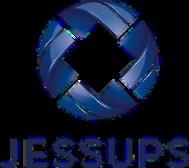
INDEPENDENCE DECLARATION
TO THE DIRECTORSOF NORTHERNGULFRESOURCE MANAGEMENT GROUP LTD FOR THE YEAR ENDED 30 JUNE 2025
In accordance with section 60-40 of the Corporations Act 2001, we declare that, to the best of our knowledge and belief, in relation to the audit for the year ended 30 June 2025, there have been no contraventions of:
• • the auditor independence requirements as set out in the Corporations Act 2001 in relation to the audit; and any applicable code of professional conduct in relation to the audit

Jessups DarrenThamm
Partner
Dated this 6th day of November 2025


For the Year Ended 30 June 2025
Other income
Employee benefits expense
Depreciation and amortisation expense
Board expenses
Staff expenses
WHS expenses Corporate expenses
Projects expenses
Motor vehicle expenses
Office expenses
IT support expenses
Grant funds returned
Prior period adjustments
Finance expenses
Profit before income tax Income tax expense Profit for the year
Other comprehensive income for the year, net of tax

4,015,251 50,322 193 (2,073,607) (106,193) (97,988) (30,231) (29,406) (92,650) (1,110,144) (56,261) (35,040) (29,066) (28,617) 17,239 (6,845) 386,957386,957386,957 2024 $ 2,779,908 42,105 124,650 (1,453,611) (32,184) (102,646) (19,215) (10,374) (81,866) (694,131) (46,752) (86,721) (17,254)1,094 (8,899) 394,103394,103394,103
accompanying
Statement of Financial Position
As At 30 June 2025
ASSETS CURRENT ASSETS
Cash and cash equivalents
Trade and other receivables
TOTAL CURRENT ASSETS
NON-CURRENT ASSETS
Property, plant and equipment
TOTAL NON-CURRENT ASSETS
TOTAL ASSETS
LIABILITIES
CURRENT LIABILITIES
Trade and other payables
Lease liabilities
Employee benefits
Other financial liabilities
TOTAL CURRENT LIABILITIES NON-CURRENT LIABILITIES Borrowings Lease
EQUITY
Retained earnings
TOTAL EQUITY
The accompanying notes form part of these financial statements
2,734,957 2,734,957 3,159,366 119,474 3,278,840 354,937 354,937 3,633,777 58,43330,245 88,678 898,820 2,734,957 249,343 4,714 113,731 442,354 810,142 2024 $ 2,348,000 2,348,000 3,672,415 622,377 4,294,792 268,268 268,268 4,563,060 93,053 15,879 12,043 120,975 2,215,060 2,348,000 193,142 62,180 102,385 1,736,378 2,094,085
Statement of Changes in Equity
For the Year Ended 30 June 2025
Balance at1 July 2024
Surplus (deficit) for the year
Total other comprehensive income for the period
Balance at30 June 2025
Balance at1 July 2023
Surplus (deficit) for the year
Total other comprehensive income for the period
Balance at30 June 2024 The accompanying notes form

Retained Earnings $ 2,348,000 386,9572,734,957 Retained Earnings $ 1,953,897 394,1032,348,000 Total $ 2,348,000 386,9572,734,957 Total $ 1,953,897 394,1032,348,000

Statement of Cash Flows
For the Year Ended 30 June 2025
CASH FLOWS FROM OPERATING ACTIVITIES:
Receipts from customers
Payments to suppliers and employees
Interest received
Net cash provided by/(used in) operating activities

CASH FLOWS FROM INVESTING ACTIVITIES:
Proceeds from sale of plant and equipment
Purchase of property, plant and equipment
Net cash provided by/(used in) investing activities

CASH FLOWS FROM FINANCING ACTIVITIES:
Repayment of lease liabilities
Net cash provided by/(used in) financing activities

Net increase/(decrease) in cash and cash equivalents held Cash and cash equivalents at beginning of year Cash and cash equivalents at end of financial year 5 Note



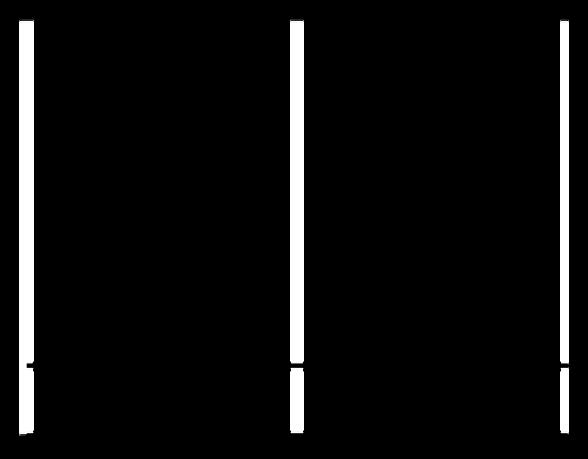
The accompanying notes form part of these financial statements 2025 $(192,862) (192,862) (513,049) 3,672,415 3,159,366 (97,570) (97,570) 3,464,986 (3,737,925) 50,322 (222,617) 2024 $ 27,00027,000 949,646 2,722,769 3,672,415 (34,689) (34,689) 4,389,567 (3,474,337) 42,105 957,335



Northern Gulf Resource Management Group Ltd trading as Gulf Savannah NRM
Notes to the Financial Statements
For the Year Ended 30 June 2025
The financial report covers Northern Gulf Resource Management Group Ltd trading as Gulf Savannah NRM as an individual entity Northern Gulf Resource Management Group Ltd trading as Gulf Savannah NRM is a, incorporated and domiciled in Australia
The principal activities of the for the year ended 30 June 2025 were to plan and advise on issues and best practice for natural resources in the Northern Gulf region
The functional and presentation currency of Northern Gulf Resource Management Group Ltd trading as Gulf Savannah NRM is Australian dollars
Comparatives are consistent with prior years, unless otherwise stated
1
The financial statements are general purpose financial statements that have been prepared in accordance with the Australian Accounting Standards - Simplified Disclosures and the Australian Charities and Not-for-profits Commission Act 2012.
The financial statements have been prepared on an accruals basis and are based on historical costs modified, where applicable, by the measurement at fair value of selected non-current assets, financial assets and financial liabilities
Material accounting policy information is consistent with prior reporting periods unless otherwise stated
2 (a)
Material Accounting Policy Information
Grant income Basis of Preparation
Revenue and other income
Revenue from contracts with customers
Revenue is recognised on a basis that reflects the transfer of control of promised goods or services to customers at an amount that reflects the consideration the expects to receive in exchange for those goods or services
Generally the timing of the payment for sale of goods and rendering of services corresponds closely to the timing of satisfaction of the performance obligations, however where there is a difference, it will result in the recognition of a receivable, contract asset or contract liability
None of the revenue streams of the have any significant financing terms as there is less than 12 months between receipt of funds and satisfaction of performance obligations
Specific revenue streams
The revenue recognition policies for the principal revenue streams of the are:
Where grant income arises from an agreement which is enforceable and contains sufficiently specific performance obligations then the revenue is recognised when control of each performance obligations is satisfied
The performance obligations are varied based on the agreement but may include delivery of specific program objectives relating to specific outcomes such as landcare, pest management or water quality management for
Notes to the Financial Statements
For the Year Ended 30 June 2025
Material Accounting Policy Information
Revenue and other income
Specific revenue streams example
Each performance obligation is considered to ensure that the revenue recognition reflects the transfer of control and within grant agreements there may be some performance obligations where control transfers at a point in time and others which have continuous transfer of control over the life of the contract
Where control is transferred over time, generally the input methods being either costs or time incurred are deemed to be the most appropriate methods to reflect the transfer of benefit
Revenue in the scope of AASB 1058 is recognised on receipt unless it relates to a capital grant which satisfies certain criteria, in this case the grant is recognised as the asset is acquired or constructed.
Capital grants received to enable the company to acquire or construct an item of property, plant and equipment to identified specifications which will be under the Company's control and which is enforceable are recognised as revenue as and when the obligation to construct or purchase is completed
For construction projects, this is generally as the construction progresses in accordance with costs incurred since this is deemed to be the most appropriate measure of the completeness of the construction project as there is no profit margin
For acquisitions of assets, the revenue is recognised when the asset is acquired and controlled by the Company
Other income
Other income is recognised on an accruals basis when the is entitled to it
Income tax
The is exempt from income tax under Division 50 of the Income Tax Assessment Act 1997
Goods and services tax (GST)
Revenue, expenses and assets are recognised net of the amount of goods and services tax (GST), except where the amount of GST incurred is not recoverable from the Australian Taxation Office (ATO) Receivables and payable are stated inclusive of GST
Cash flows in the statement of cash flows are included on a gross basis and the GST component of cash flows arising from investing and financing activities which is recoverable from, or payable to, the taxation authority is classified as operating cash flows
Volunteer services
No amounts are included in the financial statements for services donated by volunteers
Notes to the Financial Statements
For the Year Ended 30 June 2025
Material Accounting Policy Information
Property, plant and equipment
Each class of property, plant and equipment is carried at cost less, where applicable, any accumulated depreciation and impairment
Property, plant and equipment, excluding freehold land, is depreciated on a reducing balance basis over the asset's useful life to the , commencing when the asset is ready for use
The depreciation rates used for each class of depreciable asset are shown below:
Fixed asset class
Freehold Land
Buildings
Plant and Equipment
Motor Vehicles
Financial instruments


Financial instruments are recognised initially on the date that the becomes party to the contractual provisions of the instrument
On initial recognition, all financial instruments are measured at fair value plus transaction costs (except for instruments measured at fair value through profit or loss where transaction costs are expensed as incurred)
Financial assets
All recognised financial assets are subsequently measured in their entirety at either amortised cost or fair value, depending on the classification of the financial assets
Classification
On initial recognition, the classifies its financial assets into the following categories, being those measured at amortised cost The Company does not hold any financial assets at fair value
Financial assets are not reclassified subsequent to their initial recognition unless the changes its business model for managing financial assets
Amortised cost
The 's financial assets measured at amortised cost comprise trade and other receivables and cash and cash equivalents in the statement of financial position
Subsequent to initial recognition, these assets are carried at amortised cost using the effective interest rate method less provision for impairment
Trade receivables
Impairment of trade receivableshave been determined using the simplified approach in AASB 9 which uses an estimation of lifetime expected credit losses
Notes to the Financial Statements
For the Year Ended 30 June 2025
Material Accounting Policy Information
Financial instruments
Financial assets
The has determined the probability of non-payment of the receivableand multiplied this by the amount of the expected loss arising from default.
The amount of the impairment is recorded in a separate allowance account with the loss being recognised in finance expense Once the receivable is determined to be uncollectable then the gross carrying amount is written off against the associated allowance
Financial liabilities
The measures all financial liabilities initially at fair value less transaction costs, subsequently financial liabilities are measured at amortised cost using the effective interest rate method.
The financial liabilities of the comprise trade payables, bank and other loans and lease liabilities.
Impairment of non-financial assets
At the end of each reporting period the determines whether there is evidence of an impairment indicator for non-financial assets
Where an indicator exists, the recoverable amount of the asset is estimated Where assets do not operate independently of other assets, the recoverable amount of the relevant cash-generating unit (CGU) is estimated
The recoverable amount of an asset or CGU is the higher of the fair value less costs of disposal and the value in use Value in use is the present value of the future cash flows expected to be derived from an asset or cashgenerating unit
Where the recoverable amount is less than the carrying amount, an impairment loss is recognised in profit or loss.
(h) Leases
Cash and cash equivalents
Cash and cash equivalents comprises cash on hand, demand deposits and short-term investments which are readily convertible to known amounts of cash and subject to an insignificant risk of change in value.
At inception of a contract, the assesses whether a lease exists
At the lease commencement, the recognises a right-of-use asset and associated lease liability for the lease term The lease term includes extension periods where the believes it is reasonably certain that the option will be exercised
The right-of-use asset is measured using the cost model, depreciated over the lease term on a straight-line basis and assessed for impairment in accordance with the impairment of assets accounting policy
The lease liability is initially measured at the present value of the remaining lease payments at the
Northern Gulf Resource Management Group Ltd trading as Gulf Savannah NRM
Notes to the Financial Statements
For the Year Ended 30 June 2025
Material Accounting Policy Information
Leases
commencement of the lease The discount rate is the rate implicit in the lease, however where this cannot be readily determined then the 's incremental borrowing rate is used
Subsequent to initial recognition, the lease liability is measured at amortised cost using the effective interest rate method. The lease liability is remeasured whether there is a lease modification, change in estimate of the lease term or index upon which the lease payments are based (e g CPI) or a change in the 's assessment of lease term
Where the lease liability is remeasured, the right-of-use asset is adjusted to reflect the remeasurement or is recorded in profit or loss if the carrying amount of the right-of-use asset has been reduced to zero
Exceptions to lease accounting
The has elected to apply the exceptions to lease accounting for both short-term leases (i.e. leases with a term of less than or equal to 12 months) and leases of low-value assets. The recognises the payments associated with these leases as an expense on a straight-line basis over the lease term.
Employee benefits
Provision is made for the 's liability for employee benefits, those benefits that are expected to be wholly settled within one year have been measured at the amounts expected to be paid when the liability is settled
Employee benefits expected to be settled more than one year after the end of the reporting period have been measured at the present value of the estimated future cash outflows to be made for those benefits In determining the liability, consideration is given to employee wage increases and the probability that the employee may satisfy vesting requirements Cashflows are discounted using market yields on high quality corporate bond rates incorporating bonds rated AAA or AA by credit agencies, with terms to maturity that match the expected timing of cashflows Changes in the measurement of the liability are recognised in profit or loss
Economic dependence
Northern Gulf Resource Management Group Ltd trading as Gulf Savannah NRM is dependent on the Australian Commonwealth and State Governments for the majority of its revenue used to operate the business. At the date of this report the directors have no reason to believe the Australian Commonwealth and State Governments will not continue to support Northern Gulf Resource Management Group Ltd trading as Gulf Savannah NRM
Adoption of new and revised accounting standards
The has adopted all standards which became effective for the first time at 30 June 2025, the adoption of these standards has not caused any material adjustments to the reported financial position, performance or cash flow of the .
New accounting standards for application in future periods
The AASB has issued new and amended Accounting Standards and Interpretations that have mandatory application dates for future reporting periods The directors have decided against early adoption of these Standards, but does not expect the adoption of these standards to have any impact on the reported position or performance of the
Notes to the Financial Statements
Critical Accounting Estimates and Judgments
Those charged with governance make estimates and judgements during the preparation of these financial statements regarding assumptions about current and future events affecting transactions and balances
These estimates and judgements are based on the best information available at the time of preparing the financial statements, however as additional information is known then the actual results may differ from the estimates
The significant estimates and judgements made have been described below
Key estimates - impairment of property, plant and equipment
The assesses impairment at the end of each reporting period by evaluating conditions specific to the that may be indicative of impairment triggers. Recoverable amounts of relevant assets are reassessed using value-in-use calculations which incorporate various key assumptions.
Key estimates - grant income
For many of the grant agreements received, the determination of whether the contract includes sufficiently specific performance obligations was a significant judgement involving discussions with a number of parties at the , review of the proposal documents prepared during the grant application phase and consideration of the terms and conditions
Grants received by the have been accounted for under both AASB 15 and AASB 1058 depending on the terms and conditions and decisions made.
If this determination was changed then the revenue recognition pattern would be different from that recognised in these financial statements
Key estimates - receivables
The receivables at the reporting date have been reviewed to specifically provide for any debts which are considered irrecoverable The remaining debts have been subject to expected credit loss testing based on the history of the association with the counterparty, the current economic climate and any future expectations relating to the industry and circumstances of the counterparty
the Year Ended 30 June 2025
Revenue from contracts with customers (AASB 15) - Grant revenue
Revenue recognised on receipt (AASB 1058) - Corporate income
- Unexpended grants from prior year - Unexpended grants carried forward Other Income - other income - donations - net gain on disposal of property, plant and equipment
Total Revenue CURRENT Trade receivables Cash at bank and in hand Short-term deposits Other Revenue and Income Cash and Cash Equivalents Trade and Other Receivables


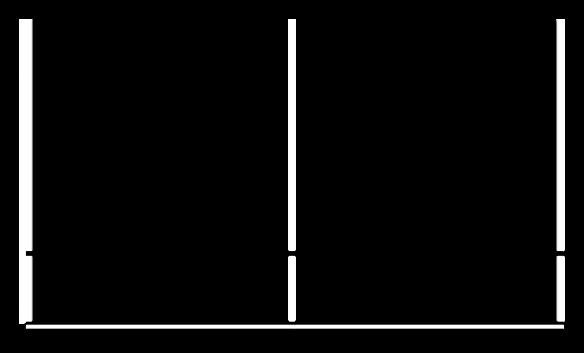
1,568,358 1,591,008 3,159,366 35,508 35,508 4,015,251 119,474 119,474 193 193 2,685,719 1,736,378 (442,354) 3,979,743 2024 $ 2024 $ 2024 $ 2,130,949 1,541,466 3,672,415 222,291 222,291 2,779,908 622,377 622,377 91 114,315 10,244 124,650 3,517,323 776,672 (1,736,378) 2,557,617
For the Year Ended 30 June 2025
Property, Plant and Equipment
Buildings At cost
Total buildings
Plant and equipment At cost
Accumulated depreciation Total plant and equipment
Motor vehicles At cost
Accumulated depreciation
Total motor vehicles
Right-of-Use - Buildings At cost
Accumulated depreciation
Total Right-of-Use - Buildings
Right-of-Use - Motor Vehicles At cost
Accumulated depreciation

Year ended 30 June 2025
Additions
Depreciation expense
Total $ (106,193) 120,789 (113,088) 7,701 468,645 (280,920) 187,725 247,661 (174,819) 72,842 28,395 (28,395) 268,268
and equipment between the beginning and the end of the current financial year:
Balance at the end of the year
268,268 192,862 354,937 Movement in the carrying amounts for each class

the Year Ended 30 June 2025
The Company leases land and buildings for their corporate offices with a term of five years expiring on 27 September 2025 The lease has no renewal option to allow the Company to renew the lease
The maturity analysis of lease liabilities based on contractual undiscounted cash flows is shown in the table below: Lease liabilities included in this Statement Of Financial Position $ Total undiscounted lease liabilities $ < 1 year $ 1 - 5 years $ > 5 years $
Trade and other payables are unsecured, non-interest bearing and are normally settled within 30 days The carrying value of trade and other payables is considered a reasonable approximation of fair value due to the short-term nature of the balances 78,059 4,714 93,053 93,053 36,074 113,399 43,670 193,143
non-current borrowings

3,159,366 119,474 3,278,840 307,776 307,776 30,245 30,245 6,821 106,910 113,731
1,736,378 1,736,378 3,672,415 622,377 4,294,792 286,196 286,196 12,043 12,043 11,061 91,324 102,385
The is registered with the Australian Charities and Not-for-profits Commission Act 2012 and is a limited by guarantee. If the is wound up, the constitution states that each member is required to contribute a maximum of $ 10 each towards meeting any outstanding obligations of the . At 30 June 2025 the number of members was 16 (2024: 16).
The remuneration paid to key management personnel of the is $ 253,516(2024: $ 230,327)
Notes to the Financial Statements
the Year Ended 30 June 2025
Remuneration
Remuneration of the auditor [2025: Jessups, 2024: Grubers Beckett], for: - auditing or reviewing the financial statements
Total
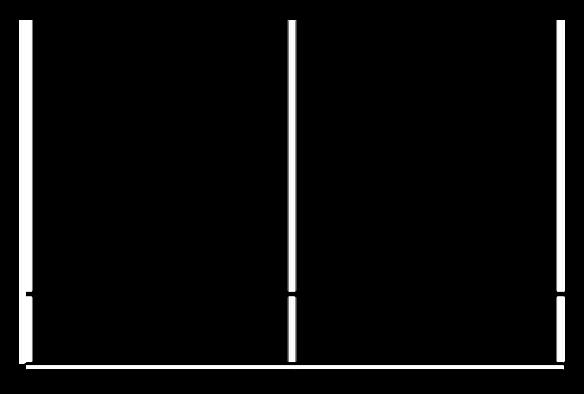
In the opinion of those charged with governance, the did not have any contingencies at 30 June 2025 (30 June 2024:None)
The 's main related parties are as follows:
Key management personnel - refer to Note 15
Other related parties include close family members of key management personnel and entities that are controlled or significantly influenced by those key management personnel or their close family members
Transactions between related parties are on normal commercial terms and conditions no more favourable than those available to other parties unless otherwise stated 10,630 10,630
Events After the End of the Reporting Period
No matters or circumstances have arisen since the end of the financialyear which significantly affected or may significantly affect the operations of the , the results of those operations or the state of affairs of the in future financial years
Northern Gulf Resource Management Group Ltd trading as Gulf Savannah NRM ABN: 94 106 450 355
Responsible Persons' Declaration
The responsible persons declare that in the responsible persons' opinion: the financial statements and notes satisfy the requirements of the Australian Charities and Not-for-profits Commission Act 2012 there are reasonable grounds to believe that the registered entity is able to pay all of its debts, as and when they become due and payable; and
Signed in accordance with subsection 60 15(2) of the Australian Charities and Not-for-profit Commission Regulation 2022
Responsible person

Dated
6th November 2025
Responsible person


INDEPENDENT AUDITOR’S REPORT

TOWNSVILLE
1/211 Sturt Street Townsville QLD 4810
PO Box 1269 Townsville QLD 4810
T: +61 7 4755 3330
CAIRNS
8-9/320 Sheridan Street Cairns QLD 4870
PO Box 674 Cairns North QLD 4870
T: +61 7 40377 050

www jessupsnq com au info@jessupsnq com au
TO THE MEMBERSOF NORTHERNGULFRESOURCE MANAGEMENT GROUP LTD FOR THE YEAR ENDED 30 JUNE 2025
Report on the Audit of the Financial Report
Opinion
Wehave audited the financial report of Northern Gulf Resource Management Group Ltd trading as Gulf Savannah NRM (the registered entity), which comprises the statement of financial position as at 30 June 2025, the statement of profit or loss and other comprehensive income, statement of changes in equity and statement of cash flows for the year then ended, and notes to the financial statements, including material accounting policies and the responsible entities’ declaration.
In our opinion, the accompanying financial report of the registered entity is in accordance with Division 60 of the Australian Charities and Not-for-profits Commission Act 2012 (ACNC Act), including:
• giving a true and fair view of the registered entity’s financial position as at 30 June 2025 and of its financial performance for the year then ended; and complying with Australian Accounting Standards – AASB 1060:
• and Division 60 of the General Purpose Financial Statements –Australian
Simplified Disclosuresfor For-Profitand Not-for-ProfitTier2Entities Charities and Not-for-profits Commission Regulation 2022
Basis for Opinion
Weconducted our audit in accordance with Australian Auditing Standards. Our responsibilities under those standards are further described in the Auditor’s Responsibilities for the Audit of the Financial Report section of our report We are independent of the registered entity in accordance with the ethical requirements of the Accounting Professional and Ethical Standards Board’s APES 110: Code of Ethics for Professional Accountants (including Independence Standards) (the Code) that are relevant to our audit of the financial report in Australia We have also fulfilled our other ethical responsibilities in accordance with the Code
We believe that the audit evidence we have obtained is sufficient and appropriate to provide a basis for our opinion
Information Other than the Financial Report and Auditor’s Report Thereon
Theresponsible entities areresponsible for the other information The other information comprises the information included in the registered entity’s annual report for the year ended 30 June 2025 but does not include the financial report and our auditor’s report thereon. Our opinion on the financial report does not cover the other information and accordingly we do not express any form of assurance conclusion thereon. In connection with our audit of the financial report, our responsibility is to read the other information and, in doing so, consider whether the other information is materially inconsistent with the financial report or our knowledge obtained in the audit or otherwise appears to be materially misstated If, based on the work we have performed, we conclude that there is a material misstatement of this other information, we are required to report that fact We have nothing to report in this regard


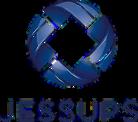
Other matter
Thefinancial report of Northern Gulf Resource Management Group Ltd was audited by another auditor who expressed an unmodified audit opinion dated 14th November 2024
Responsibilities
of the Responsible Entities for the Financial Report
In preparing the financial report, the responsible entities are responsible for assessing the registered entity’s ability to continue as a going concern, disclosing, as applicable, matters relating to going concern and using the going concern basis of accounting unless the responsible entities either intend to liquidate the registered entity or to cease operations, or have no realistic alternative but to do so
The responsible entities are responsible for overseeing the registered entity’s financial reporting process.
Auditor’s
Responsibilities for the Audit of the Financial Report
Ourobjectivesareto obtainreasonable assuranceabout whether the financial report as a whole is free from material misstatement, whether due to fraud or error, and to issue an auditor’s report that includes our opinion Reasonable assurance is a high level of assurance, but is not a guarantee that an audit conducted in accordance with the Australian Auditing Standards will always detect a material misstatement when it exists Misstatements can arise from fraud or error and are considered material if, individually or in the aggregate, they could reasonably be expected to influence the economic decisions of users taken on the basis of this financial report.
A further description of our responsibilities for the audit of the financial report is located at the Auditing and Assurance Standards website at: http://www auasb gov au/auditors responsibilities/ar4 pdf This description forms part of our auditor’s report
Independence
Weconfirmthat the independence declaration required by the ACNC Act, which has been given to the responsible entities of the registered entity, would be in the same terms if given to the responsible entities as at the time of this auditor’s report.
Jessups

DarrenThamm
Theresponsibleentitiesoftheregisteredentityareresponsibleforthepreparation of the financial report that gives a true and fair view in accordance with Australian Accounting Standards – AASB 1060: General Purpose Financial Statements – Simplified Disclosures for For-Profit and Not-for-Profit Tier 2 Entities and the ACNC Act and for such internal control as the responsible entities determine is necessary to enable the preparation of the financial report that gives a true and fair view and is free from material misstatement, whether due to fraud or error Partner
Dated this 6th day of November 2025
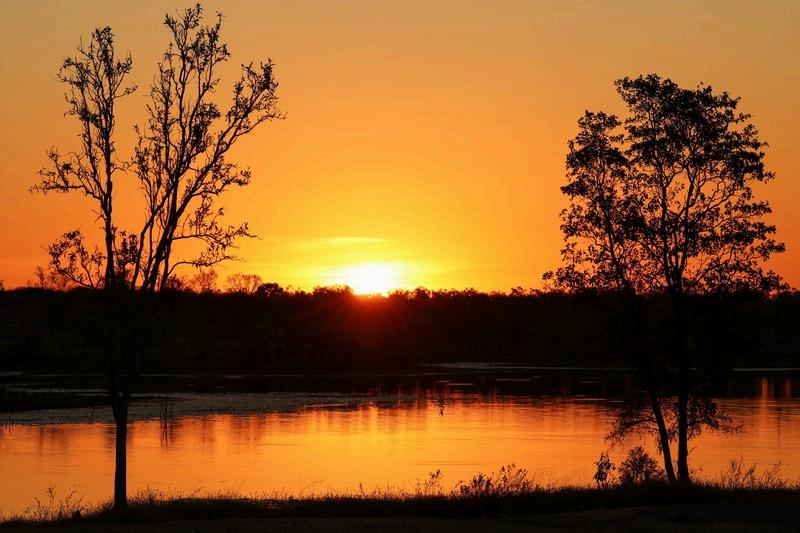
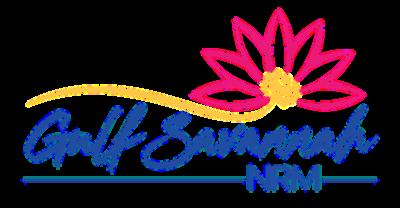

Gulf Savannah NRM is one of Queensland’s 12 regional NRM organisations maintaining and regenerating the health of our natural resources for the benefit of current and future generations
